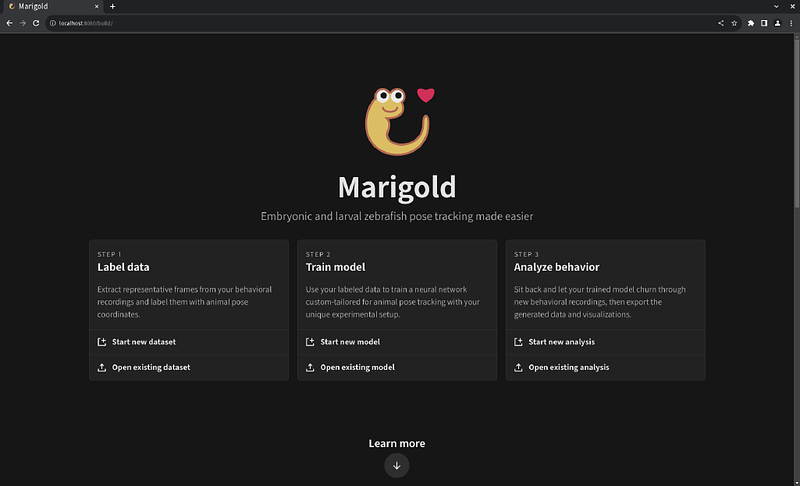Marigold: A machine learning-based web app for zebrafish pose tracking

Marigold: A machine learning-based web app for zebrafish pose tracking
Teicher, G.; Riffe, R. M.; Barnaby, W.; Martin, G.; Clayton, B. E.; Trapani, J. G.; Downes, G. B.
AbstractHigh-throughput behavioral analysis is important for drug discovery, toxicological studies, and modeling neurological disorders such as autism and epilepsy. Zebrafish embryos and larvae are ideal for such applications because they are spawned in large clutches, develop rapidly, feature a relatively simple nervous system, and have orthologs to many human disease genes. However, existing software for video-based behavioral analysis can be incompatible with recordings that contain dynamic backgrounds or foreign objects, lack support for multiwell formats, require expensive hardware, and/or demand considerable programming expertise. Here, we introduce Marigold, a free and open source web app for high-throughput behavioral analysis of embryonic and larval zebrafish. Marigold features an intuitive graphical user interface (GUI), tracks up to 10 user-defined keypoints, supports both single- and multiwell formats, and exports a range of kinematic parameters in addition to publication-quality data visualizations. By leveraging a highly efficient, custom-designed neural network architecture, Marigold achieves competitive training and inference speeds even on modestly powered computers lacking a discrete graphics processing unit (GPU). As a web app, Marigold does not require any installation and runs within popular web browsers on ChromeOS, Linux, macOS, and Windows. To demonstrate Marigold\'s utility, we used two sets of experiments. First, we examined novel aspects of the touch-evoked escape response in techno trousers (tnt) mutant embryos, which contain a previously described loss-of-function mutation in the gene encoding Eaat2b, a glial glutamate transporter. We identified differences and interactions between touch location (head vs. tail) and genotype. Second, we investigated the effects of feeding on larval visuomotor behavior at 5 and 7 days post-fertilization (dpf). We found differences in the number and vigor of swimming bouts between fed and unfed fish at both time points, as well as interactions between developmental stage and feeding regimen. In both biological experiments presented here, the use of Marigold facilitated novel behavioral findings. Marigold\'s ease of use, robust pose tracking, amenability to diverse experimental paradigms, and flexibility regarding hardware requirements make it a powerful tool for analyzing zebrafish behavior, especially in low-resource settings such as course-based undergraduate research experiences (CUREs). Marigold is available at: <a href=\"https://downeslab.github.io/marigold/\">https://downeslab.github.io/marigold/</a>.


